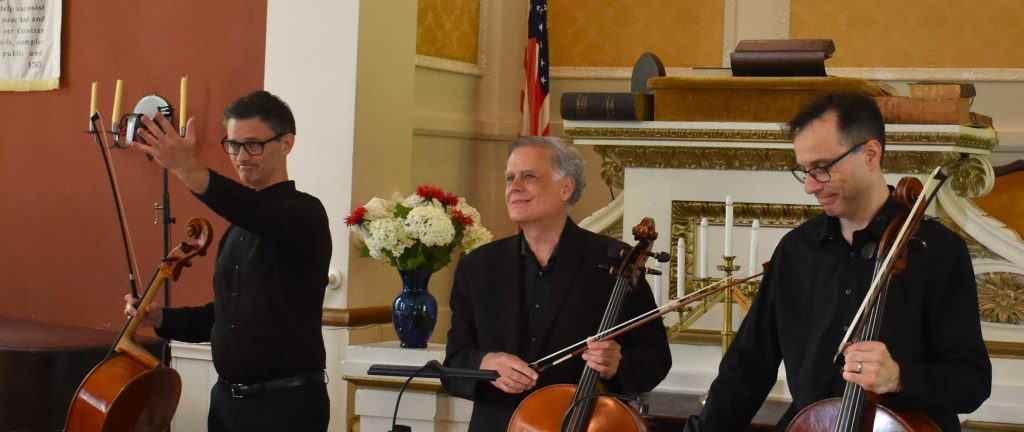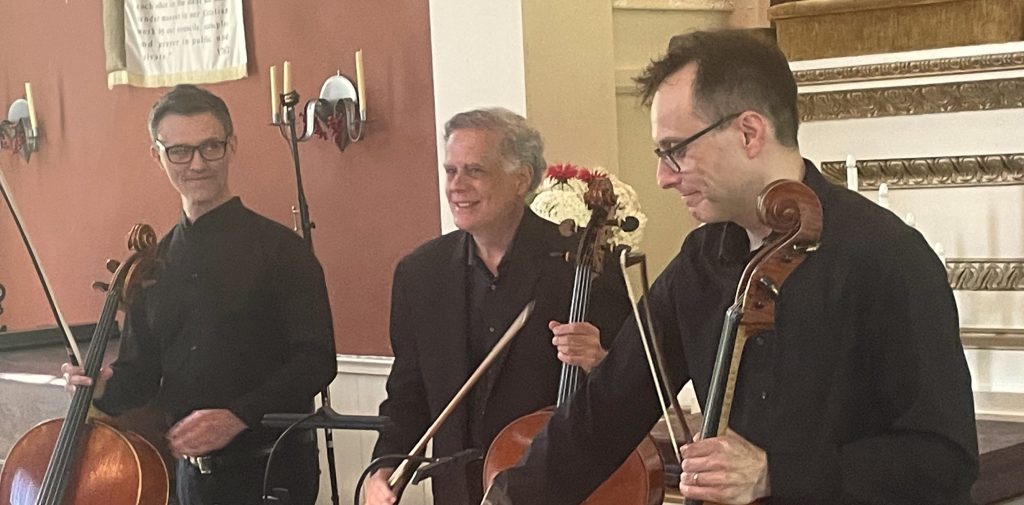
by Kevin T McEneaney
Last Sunday afternoon at Smithfield Church in Amenia, three extraordinary cellists performed an unusual program of cello music. The three fellows consisted of Arthur Fiacco, principal cellist of the Musica Sacra Orchestra and the New York Oratorio Society, Robert Burkhart, a noted soloist who has toured the globe and has a recent CD with pianist Blair McMillen, and Alberto Parrini, a member of the American Symphony Orchestra and cellist of the Salix Piano Trio.
Arthur Fiacco opened with a solo cello composition, Ricercar #2 for Solo Cello by Domenico Gabrielli (1659-1690), the first noted cello performer and composer from Bologna. A ricercar is a musical essay that searches for something. Fiacco played on a c. 1727 cello made by Carlo Tononi in Venice. (Pablo Casals played a Tononi cello.) We were treated to a period performance on a cello that Gabrielli might have played! This work is one of the earliest examples of counterpoint. The Tononi cello has a lower register than a modern cello and sounds like both a bass and a cello.
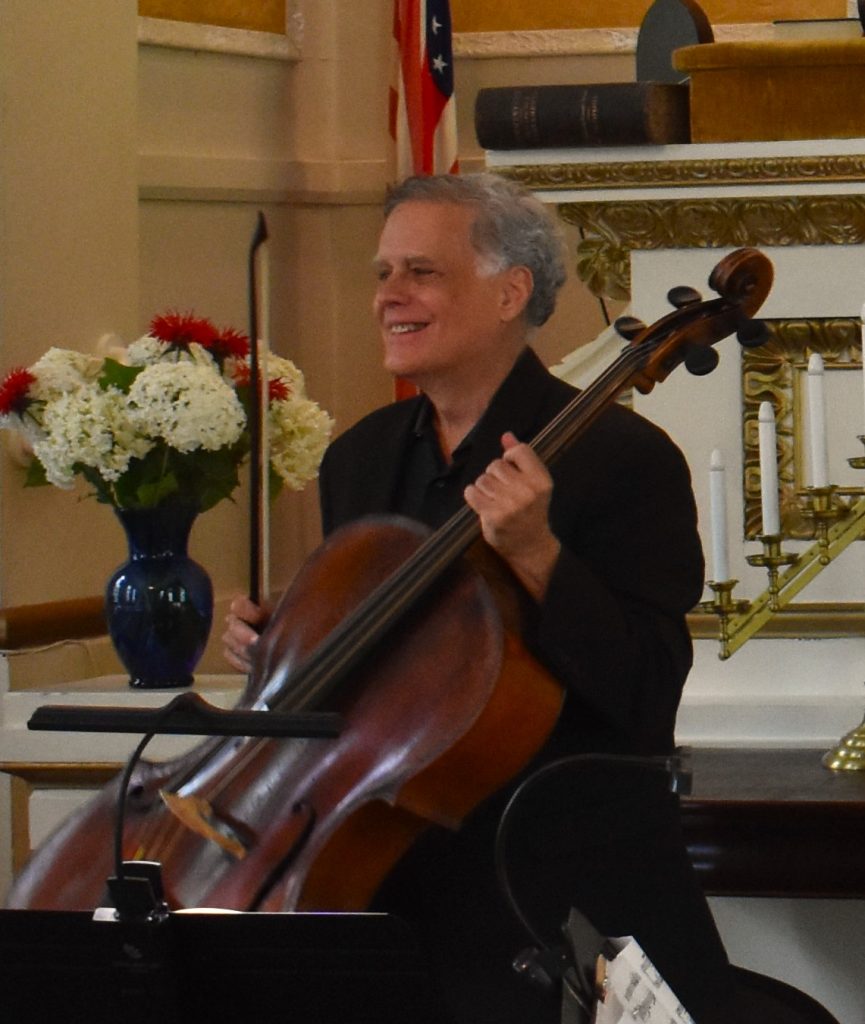
Most early Italian Renaissance music offers sophisticated versions of Celtic folk music dwells in eternal time through repeated refrains. Counterpoint explores the present time with a conversational line. The composition wandered, exploring varied avenues of sonority. The crescendo was a simple yes-no dialogue with the finale celebrating the happy harmonic solution. Fiacco played with ardent intensity in this intricate early example of what a cello can achieve.
Sonata for Two Cellos in C Major by Luigi Boccherini (1743-1805) was performed by Robert Burkhart and Alberto Parrini with complex lyric interweaving of instruments from the greatest cello composer who ever lived. (There are nearly five hundred extant compositions. Boccherini had a conservative Parisian publisher who routinely destroyed Boccherini’s more eccentric work.) The opening Allegro offered an exciting, cheerful, and amiable discussion between the two cellos. The more solemn Largo arrived at an elegiac consensus on the topic they explored. The interweaving clarity of their instruments was impressive as emotion flowed with combined pathos and acceptance of the situation at hand.
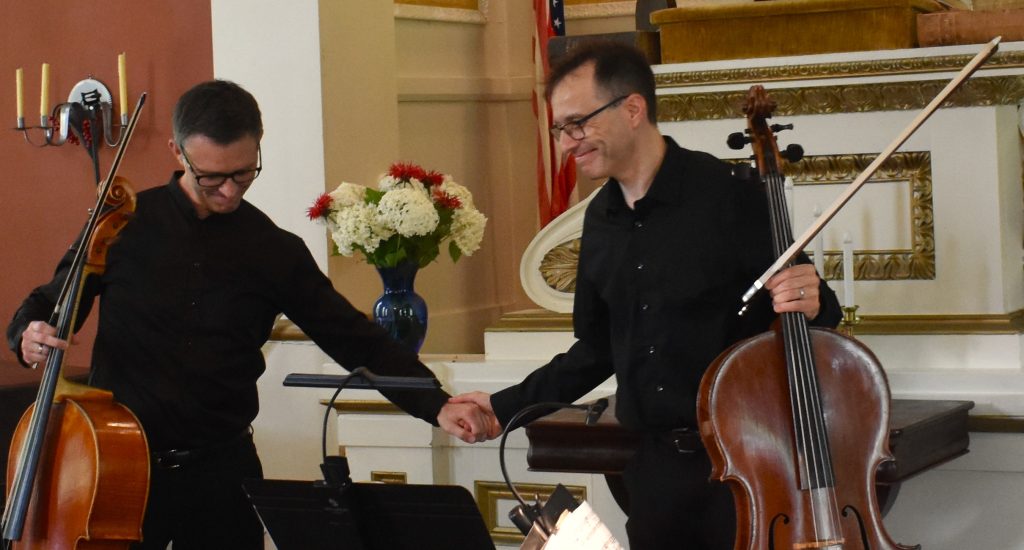
12 Duos from the 44 Duos by Bela Bartok (1881-1945) provided comic relief. Cellos played by taking turns on this nocturnal essay about a family celebrating a warm summer night behind their house. There was the bother of mosquitos, a teething baby crying, and exuberant dancing of husband and wife culminating in the cushion dance of the wife riding her husband in the dark night.
Requiem opus 66 for Three Cellos by David Popper (1843-1913) was a tribute to the memory of Liszt and Bruckner. David Popper was one of the last great cellists who did not use an end-pin. This work was written for three cellos and piano (later expanded to an orchestra). A surprise appearance by famed organist Kent Tritle as accompanist delivered mellow sounds from the church’s 1892 Johnson tracker organ, interweaving with the three lamenting cellos. The harmonic interplay was nothing short of amazing and delightful!
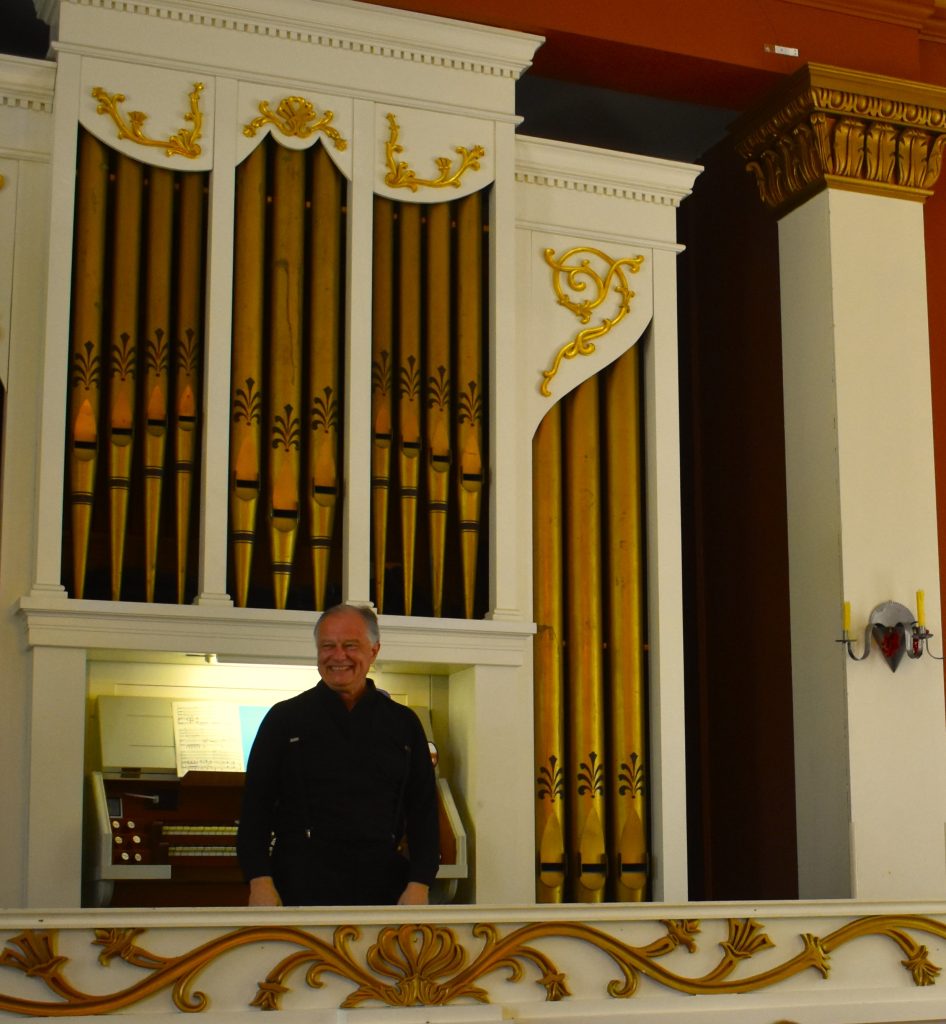
For Finale, the three cellos individually performed two Bach Cello Suites. The sequence was played in the order of composition. Each cellist performed a suite with such mastery that one felt overwhelmed by the talent exhibited on a most memorable July afternoon in air-conditioned Smithfield Church where the audience was invited to sample refreshments and tasty tidbits.
